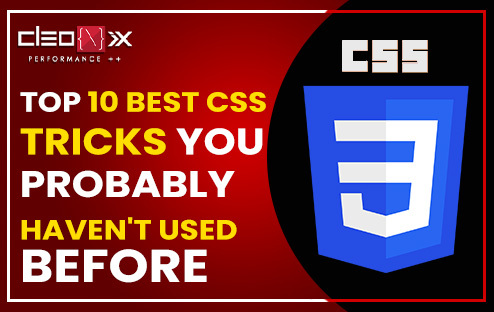
Top 10 Best CSS Tricks You Probably Haven’t Used Before
Cascading Style Sheets (CSS) is the backbone of web design, enabling developers to transform static HTML into visually stunning and interactive web pages. While most developers are familiar with the basics of CSS, there’s a world of advanced techniques and lesser-known tricks that can take your designs to the next level. In this article, we’ll delve into the top 10 best CSS tricks you probably haven’t used before. These techniques will not only enhance the aesthetics of your websites but also improve user experience and streamline your coding process.
1. Custom Underlines and Overlines
You might think underlines and overlines are plain and uninteresting, but CSS allows you to get creative with them. By using the text-decoration property and combining it with pseudo-elements like ::before and ::after, you can craft custom underlines and overlines that incorporate animations, gradients, and even icons.
cssCopy codea.custom-link {
position: relative;
text-decoration: none;
}
a.custom-link::before {
content: "";
position: absolute;
bottom: -2px;
left: 0;
width: 100%;
height: 2px;
background: linear-gradient(to right, #FF5733, #FFD700);
transform: scaleX(0);
transform-origin: left;
transition: transform 0.3s ease-in-out;
}
a.custom-link:hover::before {
transform: scaleX(1);
}
2. Smooth Scrolling with Scroll Behavior
Smooth scrolling adds a touch of elegance to your website by allowing users to glide between different sections instead of abruptly jumping. The scroll-behavior property can be set to smooth to achieve this effect globally on anchor links.
cssCopy codehtml {
scroll-behavior: smooth;
}
3. The “Clamp” Function for Responsive Typography
The clamp function in CSS is a game-changer for responsive typography. It lets you set a range of values for font size, allowing the browser to choose the appropriate font size based on the screen size.
cssCopy codeh1 {
font-size: clamp(2rem, 6vw, 4rem);
}
4. Creative Image Borders
Move beyond simple rectangular image borders. With the border-image property, you can apply intricate patterns, gradients, or even images as borders for your elements.
cssCopy code.img-border {
border: 10px solid transparent;
border-image: url('border.png') 30 round;
}
5. The “will-change” Property
Optimize the performance of your animations by using the will-change property. This informs the browser about upcoming changes, allowing it to allocate resources more efficiently.
cssCopy code.element-to-animate {
will-change: transform, opacity;
/* Your animation properties here */
}
6. Styling Broken Images
Instead of showing the default browser icon for broken images, you can use CSS to create a more user-friendly experience.
cssCopy codeimg {
content: url('fallback-image.png');
}
img:broken {
display: none;
}
7. Gradient Borders
Gradient borders add a touch of sophistication to your elements. By combining gradients and border properties, you can create stunning effects.
cssCopy code.gradient-border {
border: 2px solid transparent;
background-clip: padding-box;
border-image: linear-gradient(to right, #FF5733, #FFD700) 1;
}
8. CSS Grid for Equal Height Columns
Creating equal height columns can be challenging, but CSS Grid makes it remarkably simple.
cssCopy code.container {
display: grid;
grid-template-columns: repeat(auto-fill, minmax(250px, 1fr));
grid-gap: 20px;
}
9. Custom Checkboxes and Radio Buttons
Redefine the appearance of checkboxes and radio buttons to match your website’s design using CSS.
cssCopy codeinput[type="checkbox"],
input[type="radio"] {
display: none;
}
input[type="checkbox"] + label,
input[type="radio"] + label {
/* Your custom styling here */
}
10. Variable Fonts for Performance
Variable fonts are a single font file that contains multiple variations. They offer greater flexibility in terms of font weight, style, and width, all while improving performance by reducing the number of font files.
cssCopy code@font-face {
font-family: 'MyVariableFont';
src: url('my-variable-font.woff2') format('woff2-variations');
font-weight: 1 1000;
font-stretch: 50% 200%;
}
In conclusion, these top 10 CSS tricks introduce you to innovative ways to enhance your web design projects. By mastering these techniques, you’ll be able to create unique and engaging user experiences that stand out in the digital landscape. Experiment with these tricks, mix and match them, and let your creativity shine through your code. Your websites will thank you for it!
ALSO READ: AngularJS or ReactJS -Which One is Best for 2023?
 AJ 14, Salt Lake, Sector 2, Kolkata - 700091 |
AJ 14, Salt Lake, Sector 2, Kolkata - 700091 |  743 Virginia Ave NE Atlanta, GA 30306
743 Virginia Ave NE Atlanta, GA 30306

